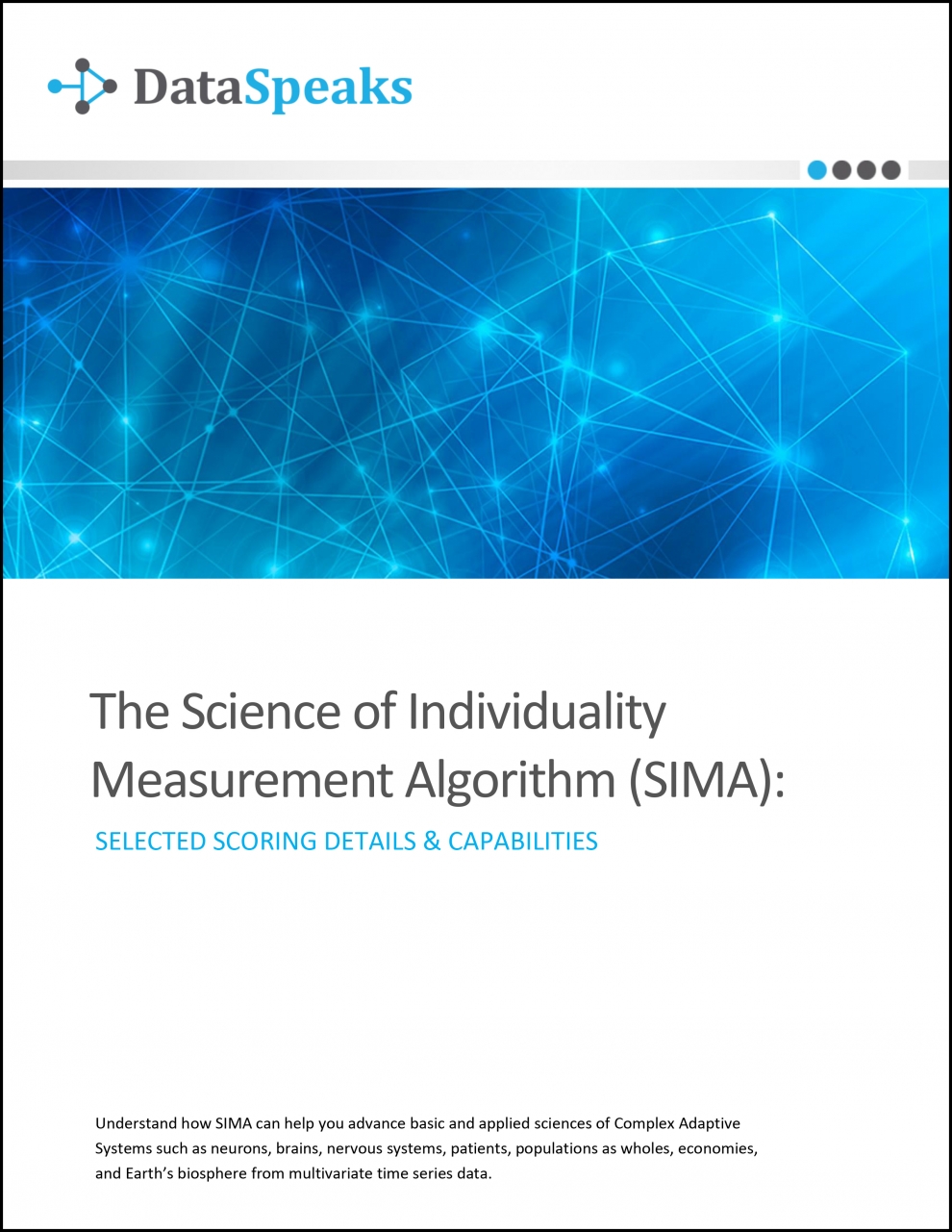Scoring Details & Capabilities
The Science of Individuality Measurement Algorithm (SIMA):
Use the link below to learn how SIMA software computes scores and how SIMA capabilities can be valuable to you. Here is the introduction to this document together with a list of what you can learn by providing your email address below.
Consider SIMA, itself a foundational measurement-by-computation platform technology, as a potential valuable addition to larger enterprise systems intended to advance basic and applied sciences of Complex Adaptive Systems (CAS). This includes enterprise systems for medicine and healthcare, app development as for the quantified-self community, businesses, academics, and governments as well as for economics and investment services. In addition to SIMA, such enterprise systems would have capabilities to collect and offer data (especially multivariate time series), privacy and security, statistics, messaging, and communications.
Enterprise system providers and others who seek to maintain unique and sustainable competitive advantages can license SIMA from DataSpeaks, Inc.
SIMA computes Interaction-over-Time (IoT) and Benefit and Harm scores from multivariate time series broadly defined as two or more repeated measurements of two or more time series. At least one time series must function as an independent variable or predictor and one as a dependent or predicted variable. The current pre-commercial version of SIMA software is limited to data with 500 repeated measurements of about 100 time series.
SIMA computes scores that describe and help predict (empirical induction) how individual CAS work (function, response, and agency) over time as “work” is defined and illustrated in the fourth image at https://dataspeaks.com. The resulting scores quantify the amount of evidence for Interactions-over-Time as to quantify networks. Benefit and Harm Scores are a variation of IoT scores used for evaluative investigations of response. Both types of scores are almost ideally suited for statistical analyses when there are two or more individuals. SIMA scores can be modeled mathematically as other measures are modeled.
Figure 1 illustrates that SIMA software computes scores, ideally from multivariate time series data.
The current pre-commercial version of SIMA software has a menu driven user interface that allows users to operationally define SIMA Scoring Protocols by selecting options. Such protocols should be defined in advance for testing hypotheses. In contrast, data miners could investigate many scoring protocols in attempts to improve explanatory and predictive power. Scores with large magnitudes, positive or negative, indicate strong patterns of predictive interactions over time. Alternatively, data miners could automate searching with large numbers of SIMA scoring protocol options taking due caution to protect against false positive results.
The following sections introduce core components of SIMA together with selected optional features. Ideally, users would be able to create and customize additional features for SIMA Scoring Protocols. Some important additional features of SIMA are confidential.
Scoring details and capabilities are presented in a series of sections.
1. De-trend and Transform Time Series
2. Digitize Time Series
3. Cross-Classify Digital Series
4. Compute Raw IoT Scores
5. Standardize Scores
6. Benefit and Harm Scores
7. Validity of Scores
8. Score Arrays
9. Nonlinearity
10. Iterative Processing
11. Delay and Persistence of Response
12. Episodes of Events
13. Boolean Events
14. Nested Time Series
15. Causality Assessment
16. Power
17. Adaptivity
Download the paper below:


